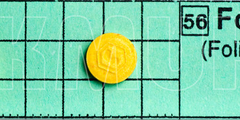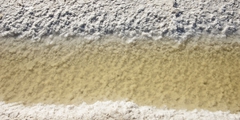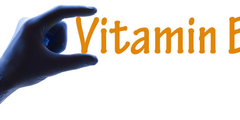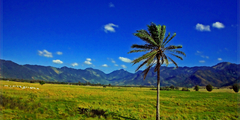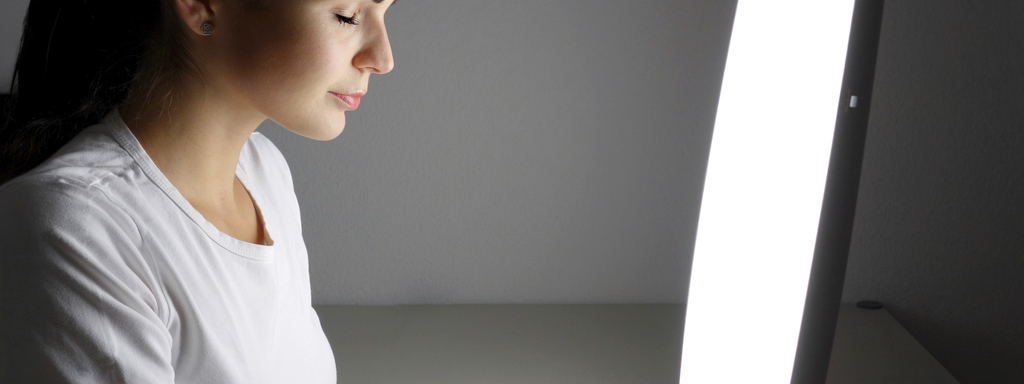
Lichttherapie bevordert de gezondheid door het versterken en bijsturen van het natuurlijke biologische ritme. De bekendste toepassing van lichttherapie is winterdepressie. Gaandeweg zijn diverse andere indicaties erbij gekomen, waaronder niet-seizoensgebonden depressie, boulimia nervosa, dementie, de ziekte van Parkinson, schizofrenie en jetlag. Het voordeel van lichttherapie is dat het veilig en gemakkelijk toepasbaar is (ook thuis) en uitstekend met andere behandelingen kan worden gecombineerd.
Beste bezoeker, u heeft geen toegang.
Enkel (web)abonnees hebben toegang tot tijdschriftartikelen. Het webabonnement is nog in de maak.
U kunt zich wel alvast (gratis) registreren en tal van andere webartikelen raadplegen!
Auteur
Verschenen in
Referenties
Berson DM, Dunn FDA, Takao M. Phototransduction by retinal ganglion cells that set the circadian clock. Science 2002;295:1070-3.
Schibler U et al. A web of circadian pacemakers. Cell. 2002;111(7):919-22.
Golden RN et al. The efficacy of light therapy in the treatment of mood disorders: a review and metaanalysis of the evidence. Am J Psychiatry. 2005;162:656-662.
Vetter C et al. ES. Mismatch of sleep and work timing and risk of type 2 diabetes. Diabetes Care. 2015;38:1707-13.
Van Dycke KC et al. Chronically alternating light cycles increase breast cancer risk in mice. Curr Biol. 2015;25:1932-7.
Givens ML et al. Shiftwork, sleep habits, and metabolic disparities: results from the Survey of the Health of Wisconsin. Sleep Health. 2015;1:115-20.
Bass J et al. Circadian integration of metabolism and energetics. Science. 2010;330(6009):1349-54.
McClung CA. Circadian rhythms and mood regulation: insights from pre-clinical models. Eur Neuropsychopharmacol. 2011;21 Suppl 4:S683-93.
Benca R et al. Biological rhythms, higher brain function, and behavior: Gaps, opportunities, and challenges. Brain Res Rev. 2009;62(1):57-70.
Meesters Y et al. Tijd van slapen; verstoring van de biologische klok door nacht - en wisseldiensten. Ned Tijdschr Geneeskd. 2015;159:A9601.
Sher L. Genetic studies of seasonal affective disorder and seasonality. Compr Psychiatry. 2001;42(2):105-10.
Mc Mahon B et al. Seasonal difference in brain serotonin transporter binding predicts symptom severity in patients with seasonal affective disorder. Brain. 2016;139(Pt 5):1605-14.
Kondratova AA et al. The circadian clock and pathology of the ageing brain. Nat Rev Neurosci. 2012;13(5):325-35.
Stevens RG et al. Electric light, particularly at night, disrupts human circadian rhythmicity: is that a problem? Philos Trans R Soc Lond B Biol Sci. 2015;370(1667).
Wirz-Justice A et al. Chronotherapeutics for affective disorders. A clinician’s manual for light and wake therapy. Karger, 2009. ISBN 978-3-8055-9120-1
Kohyama J. Sleep health and asynchronization. Brain Dev. 2011;33(3):252-9.
Ochtend-avondtype vragenlijst Zelfbeoordelingsversie (MEQ-SA). http://www.cet.org/wp-content/uploads/2014/11/Cor_MEQ-SA-NL.pdf http://www.cet-surveys.com/index.php?sid=61524&newtest=Y
Münch M et al. Light and chronobiology: implications for health and disease. Dialogues Clin Neurosci. 2012;14:448-53.
Terman M et al. Light treatment for sleep disorders: consensus report. IV. Sleep phase and duration disturbances. J Biol Rhythms. 1995;10(2):135-47.
Meesters Y et al. Winterdepressie en lichttherapie I: syndroom en behandeling. Tijdschr voor Psychiatrie 1998;40(5):254-265. http://www.tijdschriftvoorpsychiatrie.nl/assets/articles/articles_515pdf...
Magnusson A et al. The diagnosis, symptomatology, and epidemiology of seasonal affective disorder. CNS Spectr. 2005;10(8):625-34
Mersch PP et al. The prevalence of seasonal affective disorder in The Netherlands: a prospective and retrospective study of seasonal mood variation in the general population. Biol Psychiatry. 1999;45(8):1013-22.
Meesters Y et al. The effects of low-intensity narrow-band blue-light treatment compared to bright white-light treatment in sub-syndromal seasonal affective disorder. BMC Psychiatry. 2016;16:27.
Terman M et al. Controlled trial of naturalistic dawn simulation and negative air ionization for seasonal affective disorder. Am J Psychiatry 2006;163:2126-2133.
Meesters Y et al. The effects of low-intensity narrow-band blue-light treatment compared to bright white-light treatment in sub-syndromal seasonal affective disorder. BMC Psychiatry. 2016;16:27.
Gagné AM et al. Impact of blue vs red light on retinal response of patients with seasonal affective disorder and healthy controls. Prog Neuropsychopharmacol Biol Psychiatry. 2011;35(1):227-31.
Abreu T et al. The bipolarity of light and dark: a review on bipolar disorder and circadian cycles. J Affect Disord. 2015;185:219-29.
Nutt D et al. Sleep disorders as core symptoms of depression. Dialogues Clin Neurosci. 2008;10(3):329-36.
Even C et al. Efficacy of light therapy in nonseasonal depression: a systematic review. J Affect Disord. 2008;108(1-2):11-23.
Lieverse R et al. Bright light treatment in elderly patients with nonseasonal major depressive disorder: a randomized placebo-controlled trial. Arch Gen Psychiatry. 2011;68(1):61-70.
Camardese G et al. Augmentation of light therapy in difficult-to-treat depressed patients: an open-label trial in both unipolar and bipolar patients. Neuropsychiatr Dis Treat. 2015;11:2331-8.
Chojnacka M et al. A sham-controlled randomized trial of adjunctive light therapy for non-seasonal depression. J Affect Disord. 2016;203:1-8.
Kripke DF. Light treatment for nonseasonaldepression: speed, efficacy, and combined treatment. J Aff Disorders. 1998;49:109-117.
UMCG biedt nieuwe therapievorm tegen ernstige depressie. https://www.umcg.nl/NL/UMCG/Nieuws/Persberichten/Paginas/UMCG-biedt-nieu...
Wu JC et al. Rapid and sustained antidepressant response with sleep deprivation and chronotherapy in bipolar disorder. Biol Psychiatry. 2009;66(3):298-301.
Benedetti F et al. Combined total sleep deprivation and light therapy in the treatment of drug-resistant bipolar depression: acute response and long-term remission rates. J Clin Psychiatry 2005;66:1535-1540.
Benedetti F et al. Rapid treatment response of suicidal symptoms to lithium, sleep deprivation, and light therapy (chronotherapeutics) in drug-resistant bipolar depression. J Clin Psychiatry. 2014;75(2):133-40.
Wirz-Justice A et al. A rapid-cycling bipolar patient treated with long nights, bedrest, and light. Biol Psych 1999;45:1075-1077.
Barbini B et al. Dark therapy for mania: a pilot study. Bipolar Disord. 2005;7:98-101.
Henriksen TE et al. Blocking blue light during mania - markedly increased regularity of sleep and rapid improvement of symptoms: a case report. Bipolar Disord. 2014;16(8):894-8.
Henriksen TE et al. Blue-blocking glasses as additive treatment for mania: a randomized placebo-controlled trial. Bipolar Disord. 2016;18(3):221-32.
Gomez-Bernal G. Dark therapy for schizoaffective disorder. A case report. Med Hypotheses 2009;72:105-106.
Oren DA et al. Bright light therapy for schizoaffective disorder. Am J Psychiatry. 2001;158(12):2086-7.
Crowley SK et al. Efficacy of light therapy for perinatal depression: a review. J Physiol Anthropol. 2012;31:15.
Lam RW et al. A controlled study of light therapy in women with late luteal phase dysphoric disorder. Psychiatry Res. 1999;86(3):185-92.
Parry BL et al. Reduced phase-advance of plasma melatonin after bright morning light in the luteal, but not follicular, menstrual cycle phase in premenstrual dysphoric disorder: an extended study. Chronobiol Int. 2011;28(5):415-24.
Ancoli-Israel S et al. Light treatment prevents fatigue in women undergoing chemotherapy for breast cancer. Support Care Cancer. 2012;20(6):1211-9.
Jeste N et al. Prevention of quality-of-life deterioration with light therapy is associated with changes in fatigue in women with breast cancer undergoing chemotherapy. Qual Life Res. 2013;22(6):1239-44.
Dunai A et al. Moderate exercise and bright light treatment in overweight and obese individuals. Obesity (Silver Spring). 2007;15(7):1749-57.
Lam RW et al. A controlled study of light therapy for bulimia nervosa. Am J Psychiatry. 1994;151:744-50
Braun DL et al. Bright light therapy decreases winter binge frequency in women with bulimia nervosa: a double-blind, placebo-controlled study. Compr Psychiatry. 1999;40:442- 8
Lam RW et al. An open trial of light therapy for women with seasonal affective disorder and comorbid bulimia nervosa. J Clin Psychiatry 2001;62:164-168.
Yamamotová A et al. Normalizing effect of bright light therapy on temperature circadian rhythm in patients with eating disorders. Neuro Endocrinol Lett. 2008;29(1):168-72.
Willis GL et al. Primary and secondary features of Parkinson's disease improve with strategic exposure to bright light: a case series study. Chronobiol Int. 2007;24(3):521-37.
Willis GL. Parkinson's disease as a neuroendocrine disorder of circadian function: dopamine-melatonin imbalance and the visual system in the genesis and progression of the degenerative process. Rev Neurosci. 2008;19(4-5):245-316.
Videnovic A et al. Circadian system - A novel diagnostic and therapeutic target in Parkinson's disease? Mov Disord. 2016;31(3):260-9.
Dowling GA et al. Melatonin and bright-light treatment for rest-activity disruption in institutionalized patients with Alzheimer's disease. J Am Geriatr Soc. 2008;56(2):239-46.
Sloane PD et al. High-intensity environmental light in dementia: effect on sleep and activity. J Am Geriatr Soc. 2007;55:1524–1533.
Fontana Gasio P et al. Dawn-dusk simulation light therapy of disturbed circadian rest-activity cycles in demented elderly. Exp Gerontol. 2003;38:207-216.
Haffmans PM et al. Bright light therapy and melatonin in motor restless behaviour in dementia: a placebo-controlled study. Int J Geriatr Psychiatry. 2001;16(1):106-10.
Mishima K et al. Diminished melatonin secretion in the elderly caused by insufficient environmental illumination. J Clin Endocrinol Metab. 2001;86:129-134.
Revell VL et al. How to trick mother nature into letting you fly around or stay up all night. J Biol Rhythms. 2005;20(4):353-65.
Meesters Y et al. Burnout and light treatment. Stress & Health 2010;26(1):13-20.
Drug-induced photosensitivity. http://emedicine.medscape.com/article/1049648-overview
Medications and other agents that increase sensitivity to light. https://www.dhs.wisconsin.gov/radiation/medications.htm
Kucukgoncu S et al. Optimal management of night eating syndrome: challenges and solutions. Neuropsychiatr Dis Treat. 2015;11:751-60.


